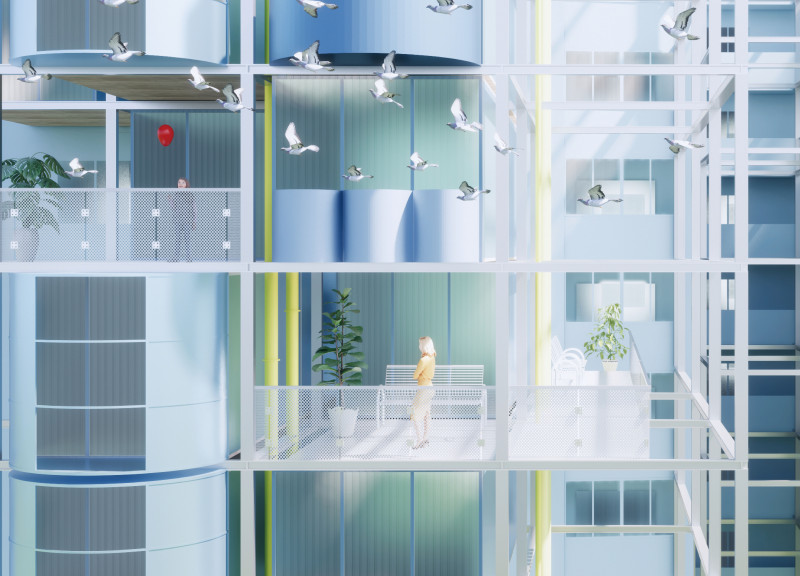5 key facts about this project
From the outset, the project presents a cohesive and harmonious design language that is immediately recognizable. The exterior façade incorporates a careful selection of materials, showcasing the use of locally sourced stone, glass, and steel. This choice not only emphasizes durability but also reflects the regional architecture, creating a dialogue between the structure and its environment. The stone offers a sense of permanence, grounding the project within its context, while the glass provides transparency and an invitation to the outside world, blurring the lines between indoor and outdoor spaces.
The project is designed to accommodate a variety of functions, including residential units, communal spaces, and commercial areas. Each component is strategically placed to enhance usability and foster a sense of community among the inhabitants. The residential portions are configured to maximize natural light and ventilation, with spacious balconies that extend living spaces outdoors. This consideration for the human scale ensures that the environment remains inviting and accessible.
Unique design strategies are evident throughout the project, particularly in the way it addresses urban density. The architects utilized vertical space creatively, employing a mixed-use approach that encourages community interaction. Shared amenities, such as rooftop gardens and communal lounges, promote social engagement among residents and visitors alike. The design also features thoughtfully landscaped areas that provide green relief amid the urban fabric, contributing to both aesthetic beauty and environmental sustainability.
Attention to detail is prevalent in various aspects of the design. The integration of energy-efficient systems demonstrates a commitment to sustainability, with features such as solar panels and rainwater harvesting systems seamlessly incorporated into the building's framework. This integration of green technologies not only reduces the ecological footprint but also represents a forward-thinking approach to urban development.
The architectural plans reveal a meticulous layout that emphasizes accessibility and circulation. Corridors and pathways are designed to facilitate movement, ensuring that spaces are not only functional but also user-friendly. Architectural sections reflect the careful consideration given to ceiling heights and spatial proportions, enhancing the overall experience of the occupants. The interplay between open and enclosed areas is handled with finesse, creating a dynamic flow that caters to diverse needs.
In summary, this architectural design project encapsulates a well-considered response to contemporary urban living, embracing both individual and communal needs. The thoughtful integration of materials, spatial organization, and sustainability practices sets a benchmark for future developments in similar contexts. For readers interested in delving deeper into the intricacies of this project, an exploration of the architectural plans, sections, and overall designs will provide additional insights into the architectural ideas that shaped this compelling endeavor.


























